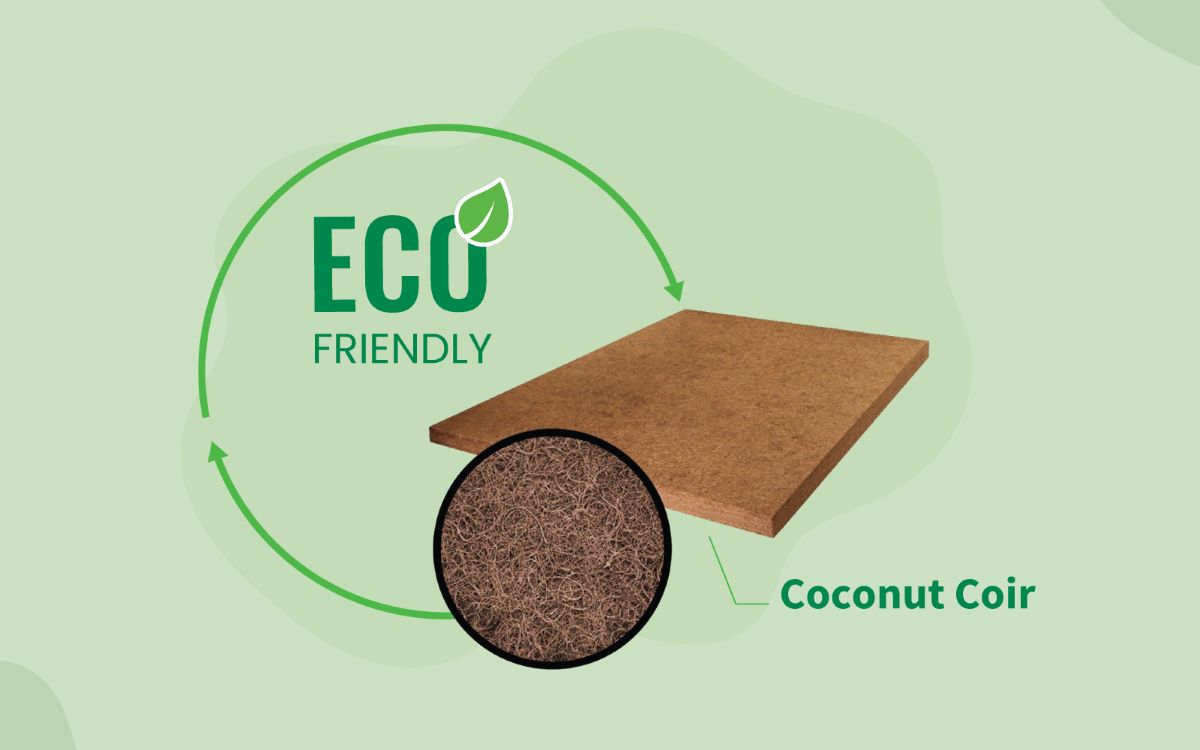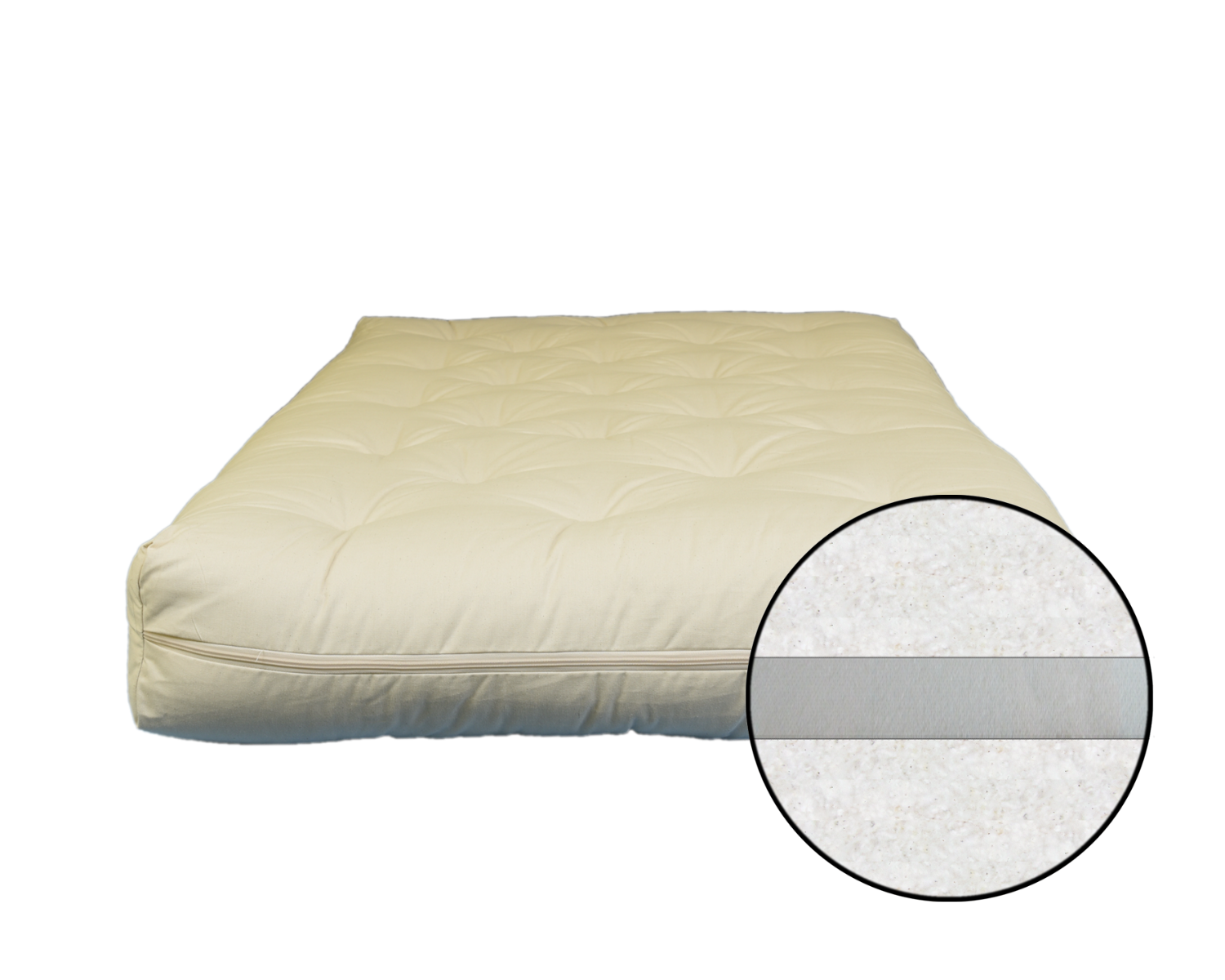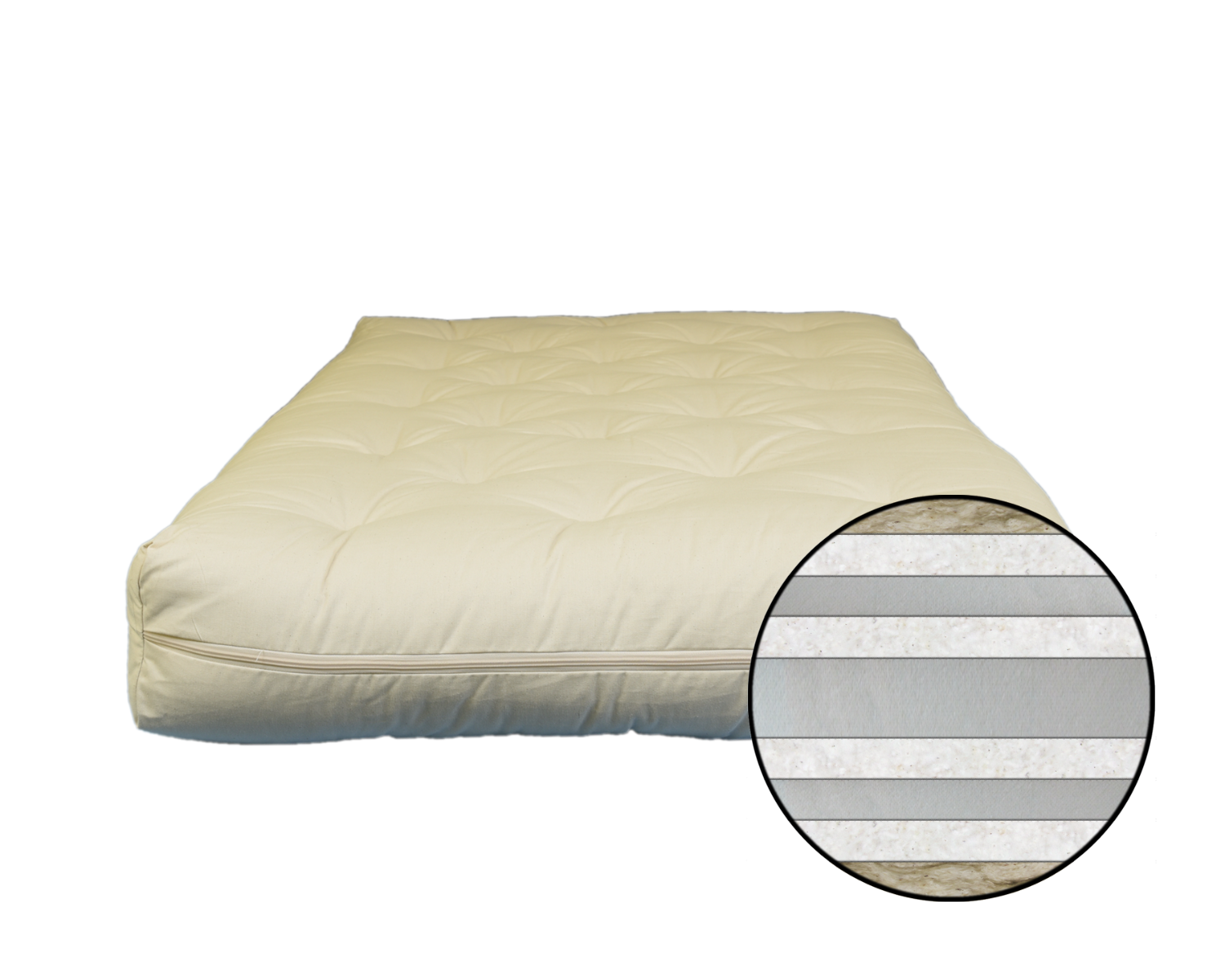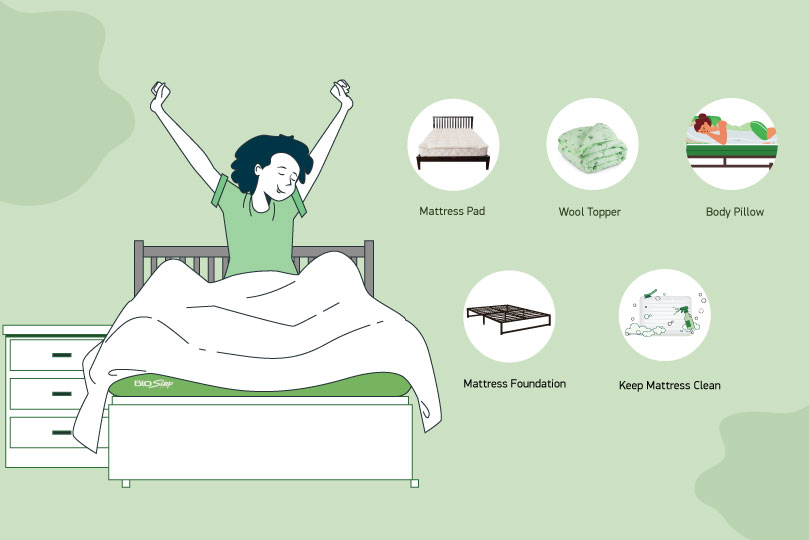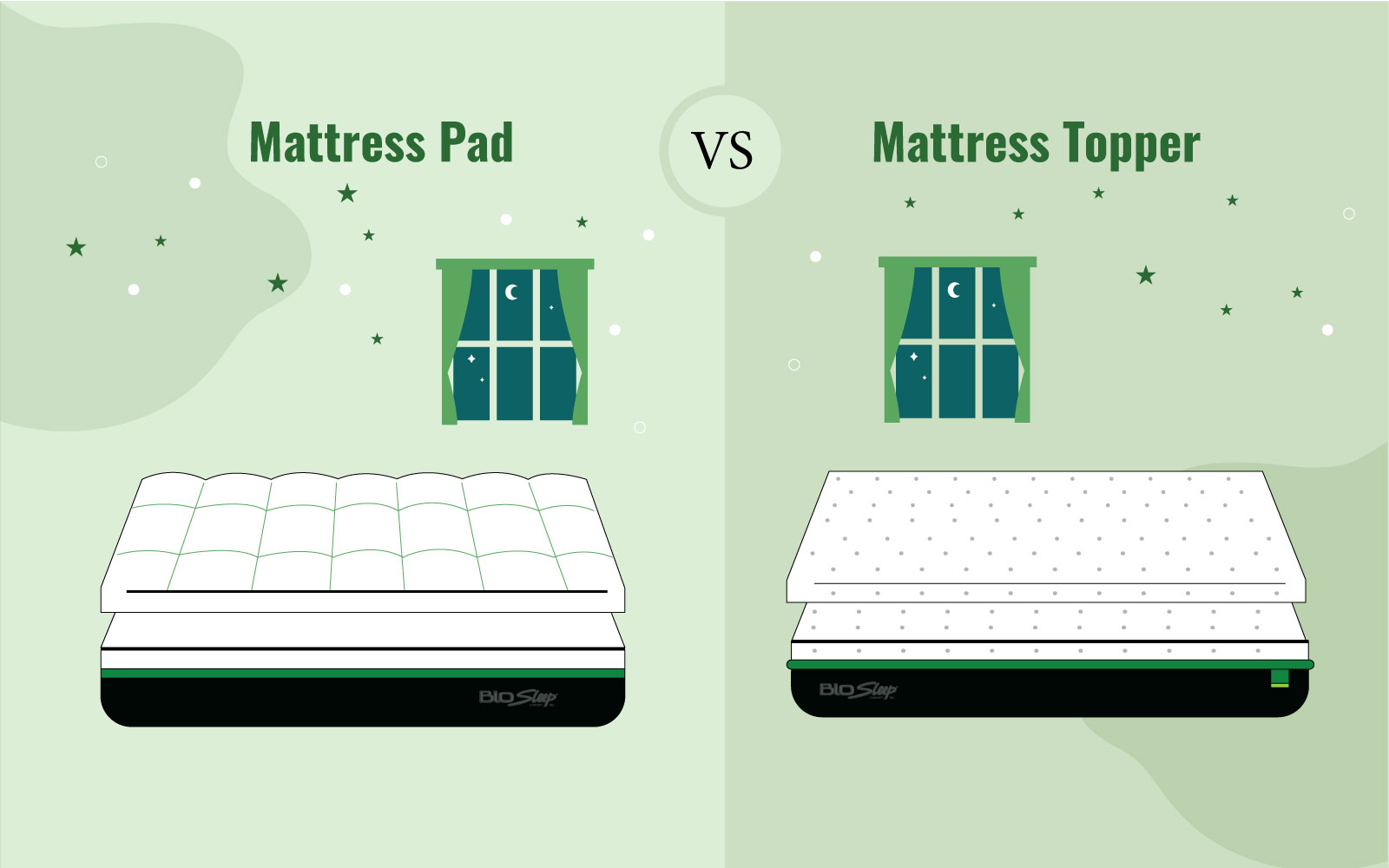Are you looking for a comfortable, natural, and eco-friendly bedding surface? Well, you don’t have to look further than a coconut coir pad. This sleeping surface is made from sustainable natural material, i.e., the fibrous husk of coconuts. The fact that it is a natural material makes it an organic bedding option.
What else does it mean?
It means your sleeping surface is hypoallergenic, free from artificial chemicals, dust-mite and mildew resistant, and so much more.
Coconut coir is an all-natural material, it lets you have a breathable bedding surface too. That means natural temperature regulation. Your surface won’t be damp with moisture due to its moisture-wicking properties.
No wonder people are flocking to buy coconut coir pads, mattresses, and toppers for their sleeping needs. Let us see in detail the reasons a coconut coir is an eco-friendly bedding option.
But first, let us see how coconut coir is different from other natural bedding materials.
How is Coconut Coir Made?
No doubt coconut coir is one of the finest eco-friendly materials for your sleeping needs. You would be astonished to know that it is not directly derived from trees.
There are several steps involved in deriving the coir from the coconut. First, farmers harvest the coconuts from the trees planted in sustainably managed forests or gardens.
Environmentally friendly machinery squeezes out the oil from dry coconuts. After extracting the oil from the coconut, the husky fiber remains.
They treat and clean these coconut fibers with water, comb them for straightening, and then leave them to dry in sunlight.
The dried and straightened husky materials are woven into thick rope-like structures. These structures are laid into slabs of layers and mixed with the organic natural latex milk.
The mixture of latex milk makes the rope-like fibrous coconut coir slabs rubberized. The rubberized slab layers are still uneven. So the final step involves steaming the layers with hot water.
Steaming it will let the latex milk seep through the core of the coir, strengthening every strand of the fiber. Thus, coconut coir pads, mattresses, or toppers are as firm, cozy, and comfortable as a firm latex would feel. You get the goodness of two organic products in one.
Coconut Coir – Why It Stands Out As An Eco-Friendly Material?
Sleeping on coconut coir pads, mattresses, or toppers, feels great. Also, coconut husk fibers have great qualities that make them an ideal option for environmentally conscious shoppers.
-
Renewable Resource
Coconut coir comes from coconuts, which are a natural fruit. Farmers can plant and grow many coconut trees in large amounts. This means there is a plentiful supply of coconut coir available.
Hence, the resource becomes renewable, which means that once the material i.e., coconuts is used to make coir, it can be grown again.
The global production of coconut was over 60 million metric tons in 2021. Hence, the use of coconut coir to make different byproducts, including bedding products, is an immense opportunity, which would otherwise go to waste.
-
Biodegradable
Furthermore, synthetic materials that do not degenerate themselves contribute to landfill waste and pollution. Coconut coir, on the other hand, is completely natural and breaks down organically over time.
When disposed of, coconut coir bedding decomposes into organic matter, enriching the soil and minimizing ecological impact.
-
Natural Air Circulation
The fibers of a coconut coir help in giving enough room for air to circulate naturally. Thus, it naturally controls temperature, keeping the surface cool during summer and warm during winter.
This also helps in reducing odors and eliminating moisture. Thus, sleeping on a coconut coir pad feels comfortable all year round.
-
Low Carbon Footprint
The production process of coconut coir from its husky fibrous form requires minimal processing and has no artificial materials, synthetic chemicals, or additives. By opting for a coconut coir pad or a mattress, consumers can reduce their carbon footprint and contribute to a more sustainable future.
Comfortable and Eco-friendly – Coconut Coir For A Healthy Bedding
From the food we eat to the products we choose, everything has a bearing on our planet. Choosing an eco-friendly option is not only healthy for our lives, but for the healthy sustenance of our planet too.
A coir is mixed with natural organic latex milk which makes the layers evenly firm and bouncy. The density of a coconut coir pad is as good as that of any latex or foam pad, making it very cozy and comfortable to sleep on.
The surface feels bouncy and you can enjoy uninterrupted sleep in a bed that adapts to your body’s needs, providing the perfect balance of comfort and support.
Coconut coir bedding emerges as a sustainable solution that ticks all the boxes: renewable, biodegradable, low carbon footprint, practical, and versatile. By choosing coconut coir bedding, consumers can make a positive impact on the environment.

